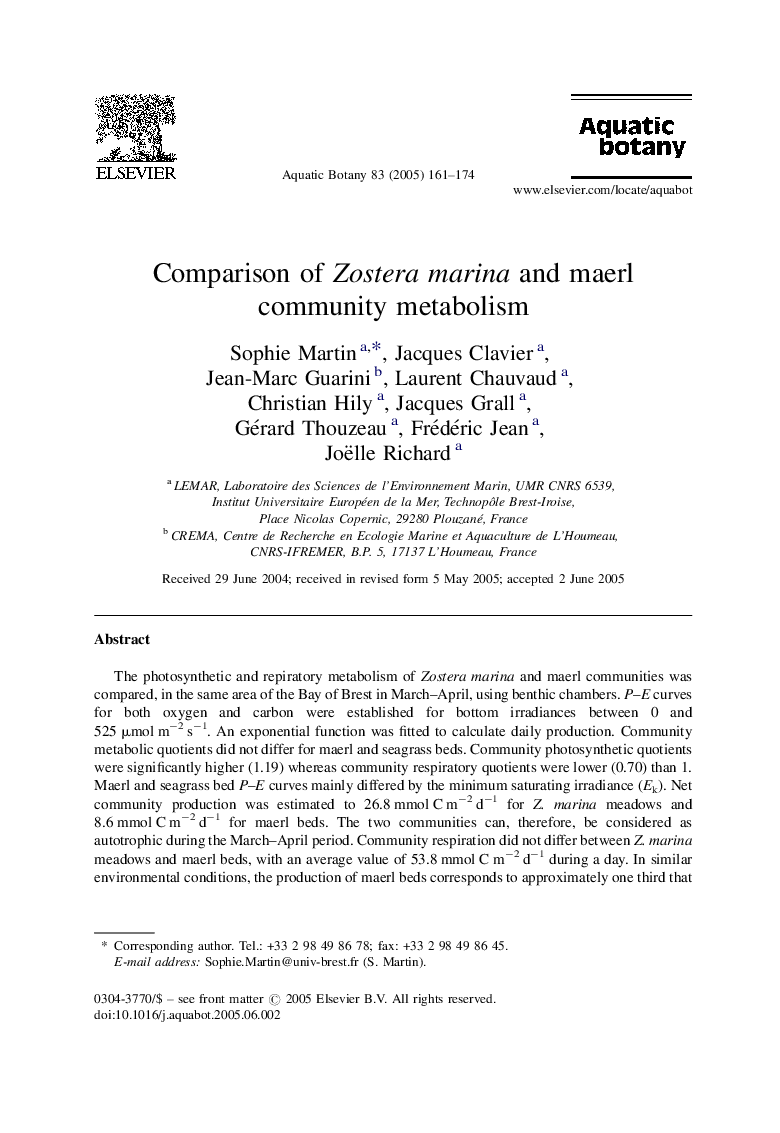| Article ID | Journal | Published Year | Pages | File Type |
|---|---|---|---|---|
| 9477552 | Aquatic Botany | 2005 | 14 Pages |
Abstract
The photosynthetic and repiratory metabolism of Zostera marina and maerl communities was compared, in the same area of the Bay of Brest in March-April, using benthic chambers. P-E curves for both oxygen and carbon were established for bottom irradiances between 0 and 525 μmol mâ2 sâ1. An exponential function was fitted to calculate daily production. Community metabolic quotients did not differ for maerl and seagrass beds. Community photosynthetic quotients were significantly higher (1.19) whereas community respiratory quotients were lower (0.70) than 1. Maerl and seagrass bed P-E curves mainly differed by the minimum saturating irradiance (Ek). Net community production was estimated to 26.8 mmol C mâ2 dâ1 for Z. marina meadows and 8.6 mmol C mâ2 dâ1 for maerl beds. The two communities can, therefore, be considered as autotrophic during the March-April period. Community respiration did not differ between Z. marina meadows and maerl beds, with an average value of 53.8 mmol C mâ2 dâ1 during a day. In similar environmental conditions, the production of maerl beds corresponds to approximately one third that of seagrass meadows. The maerl communities, therefore, form productive ecosystems, relevant to temperate coastal ecosystems functioning.
Related Topics
Life Sciences
Agricultural and Biological Sciences
Aquatic Science
Authors
Sophie Martin, Jacques Clavier, Jean-Marc Guarini, Laurent Chauvaud, Christian Hily, Jacques Grall, Gérard Thouzeau, Frédéric Jean, Joëlle Richard,
